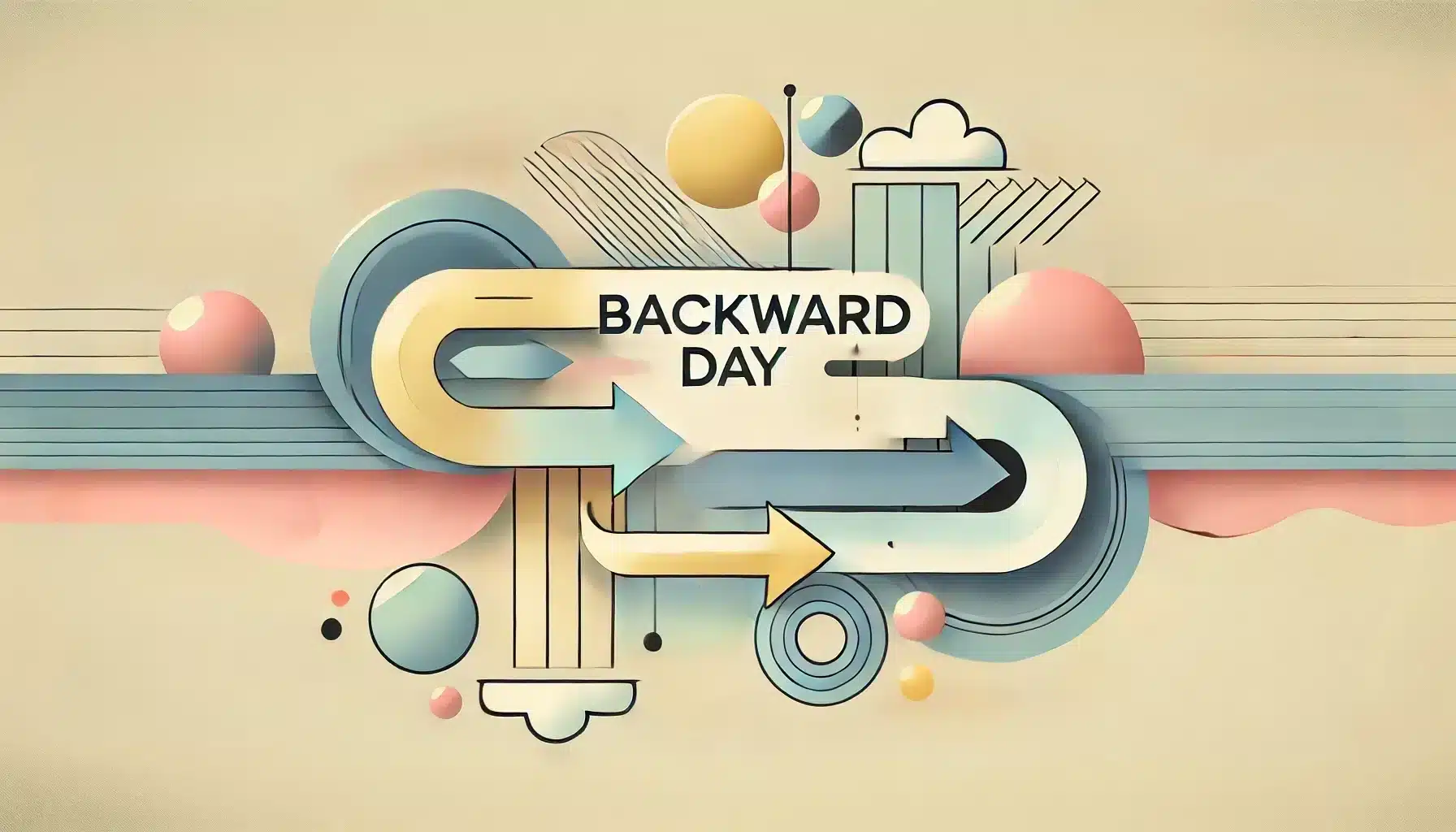What is National Backward Day?
National Backward Day is celebrated annually on January 31 as a lighthearted observance encouraging people to reverse their usual routines. From wearing clothes backward to flipping their daily schedules, this whimsical holiday invites creativity and fun. The day challenges individuals to look at life from a new perspective and embrace the unexpected.
National Backward Day is about more than just playfulness; it’s an opportunity to break out of routines, think innovatively, and view the world through a different lens. It’s a celebration of creativity, humor, and flexibility.
History and Origin
The exact origins of National Backward Day remain unclear, but it is widely attributed to two women, Megan Emily Scott and Sarah Nicole Miller, who established the idea in 1961. While working on a farm, they envisioned a day dedicated to reversing norms and creating playful chaos. They chose January 31 to mark this celebration, and the concept quickly gained traction.
The idea of reversing conventions is not entirely new. Historically, cultures have embraced similar concepts. For example, the Roman festival of Saturnalia featured role reversals, where societal norms were temporarily overturned. National Backward Day continues this tradition of playful subversion, allowing people to step outside their comfort zones and explore new perspectives.
Who Celebrates National Backward Day?
- Children and Schools: Many schools integrate National Backward Day into lessons, encouraging students to participate in backward-themed activities while promoting creativity.
- Families: Parents and children enjoy celebrating together, creating lasting memories through shared activities like dressing backward or flipping meals.
- Businesses: Some workplaces embrace the fun by hosting “backward challenges” or organizing team-building exercises with a twist.
- Social Media Enthusiasts: People around the world share their backward antics on platforms like Instagram and TikTok, fostering a sense of global connection.
- Creative Communities: Artists, writers, and innovators use the day as inspiration for thinking outside the box.
Themes and Reflections
National Backward Day encourages participants to reflect on the following themes:
- Creativity: Discover new ways of doing ordinary tasks by reversing routines.
- Perspective: Gain fresh insights by looking at things from an unconventional angle.
- Humor: Embrace the joy of playfulness and the laughter that comes with doing things backward.
- Breaking Routines: Challenge the monotony of daily life and see how small changes can spark innovation.
The day serves as a reminder that change, even if temporary and silly, can inspire growth and a renewed outlook on life.
Colors, Symbols, and Patterns
Colors:
- Red: Represents boldness and the energy to challenge norms.
- Yellow: Symbolizes happiness and the playful nature of the day.
- Blue: Reflects calmness and the ease of embracing change.
Symbols:
- Backward Arrows: Represent the reversal of routines and perspectives.
- Mirrors: Highlight the concept of seeing things in reverse.
- Upside-Down Text: Evokes the topsy-turvy essence of the day.
Patterns:
- Reverse Sequences: Patterns that begin at the end and proceed backward.
- Inverted Designs: Visuals that are flipped horizontally or vertically.
- Palindromes: Words or phrases that read the same backward and forward, symbolizing symmetry in reversal.
How to Celebrate National Backward Day
Celebrating National Backward Day can be as simple or elaborate as you’d like. Here are some ideas:
- Wear Clothes Backward: Start the day by flipping your outfit for a fun and quirky look.
- Reverse Your Meals: Have dinner for breakfast and breakfast for dinner, or enjoy dessert before your main course.
- Write and Speak Backward: Challenge yourself to write words or sentences in reverse, or try speaking backward for laughs.
- Walk Backward: Navigate your home or a safe outdoor space in reverse to change your perspective.
- Switch Roles: Swap chores or responsibilities with family members or colleagues to experience their point of view.
- Mirror Fun: Use a mirror to read or write, simulating backward text and engaging your brain in a new way.
- Create Backward Content: Share photos or videos of your backward activities on social media to join the wider celebration.
Most Used Hashtags
- #NationalBackwardDay
- #BackwardDay
- #ReverseFun
- #DoItBackward
- #TopsyTurvy
Why is National Backward Day Important?
National Backward Day serves as a fun reminder of the importance of breaking free from routines and embracing creativity. By flipping expectations, the day fosters a sense of humor and playfulness that can refresh the mind and inspire new ways of thinking.
For children, it’s an engaging way to promote imagination and problem-solving. For adults, it provides an opportunity to step back from the rigidity of daily life and rediscover joy in the unexpected.
This holiday also emphasizes the value of flexibility. Thinking backward or doing things in reverse challenges conventional methods, opening the door to innovation and new perspectives. Ultimately, National Backward Day encourages everyone to view life with a sense of curiosity, adaptability, and fun.
Features
January 31: Backward Day (United States)
Why do you keep falling for the same type?
Read the article Lovemaps: the hidden blueprint of our love.

